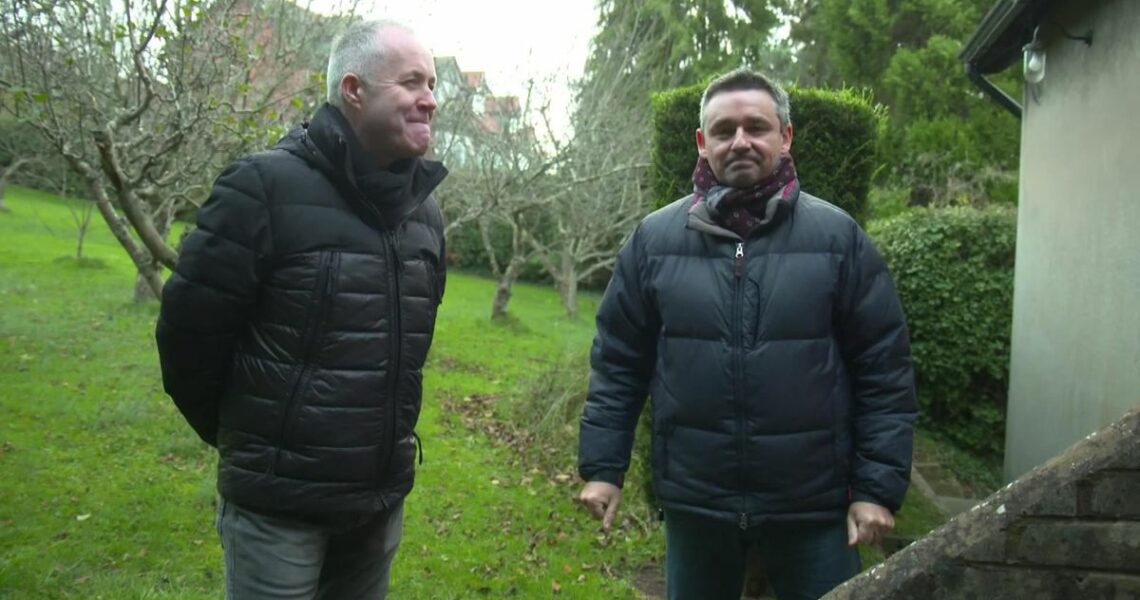The Crucible Theatre in Sheffield will host the World Snooker Championship for a 48th time this year, but who has most captured the public’s imagination at the celebrated venue since 1977?
We pick our top 10 most influential performers at the Crucible, each of whom has played pivotal roles in creating the magical legacy of snooker’s greatest show on earth.
10. Fred Davis (England) – world champion 1948, 1949, 1951, 1952, 1953, 1954, 1955 and 1956
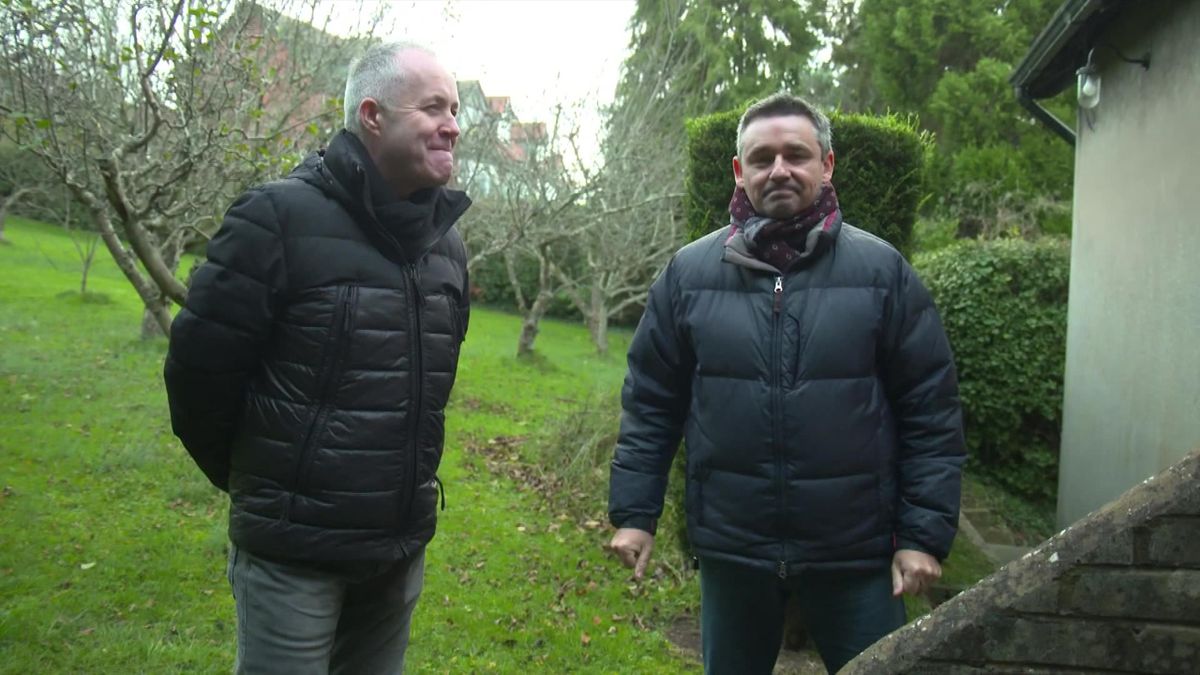
‘We should never complain about balls again!’ – Higgins and McManus sample Fred Davis’ snooker table
The World Championship was first staged at Camkin’s Hall in Birmingham in 1927, long before the Crucible Theatre in Sheffield first hosted the sport’s flagship event.
During its days as a challenge event, Joe won 15 straight times between 1927 and 1946 after purchasing the ancient trophy for £19 in 1926 that is still hoisted above the world champion’s shoulders today. Fred was triumphant eight times between 1948 and 1956 to join John Pulman, a former commentator and a figure idolised by Alex Higgins, as joint second in the all-time list.
Chesterfield-born Fred lost 18-16 to Perrie Mans in the semi-finals in 1978 at the age of 64 after overcoming John Virgo 9-8, Dennis Taylor 13-9 and Patsy Fagan 13-10 in the second year of the World Championship in Sheffield.
At the age of 79, he was still competing when he lost 5-1 to a promising teenager named Ronnie O’Sullivan in qualifying for the Grand Prix in 1992. His considerable legacy in helping to create the beginnings of tournament we witness today cannot be disputed.
9. Dennis Taylor (Northern Ireland) – world champion 1985
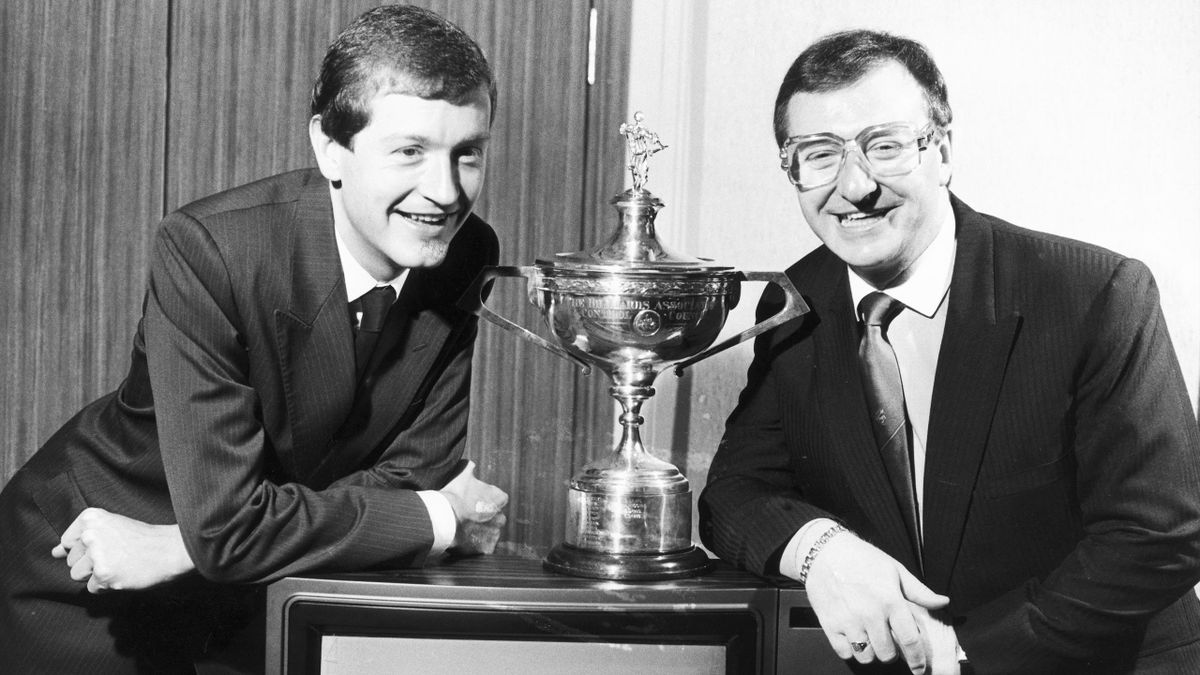
Steve Davis and Dennis Taylor after their iconic final in 1985.
Image credit: Eurosport
It would be difficult to unearth a list of the Crucible’s most memorable headline acts without giving a nod to the figure who won the tournament’s most famous match.
An all-time record terrestrial TV audience of 18.5m on BBC2 in the United Kingdom were glued to the 1985 final as Taylor – the Northern Irish bloke with the funny-shaped glasses fighting out of Country Tyrone – sunk the final black in the twilight zone of an epic 18-17 win against the apparently impregnable Steve Davis, who had somehow overcut a tricky black to a top bag with the title within potting distance.
It was a harrowing way to lose with Davis left to wonder how he blew an 8-0 advantage as Taylor wagged his finger after producing one of the great comebacks in a Crucible final that failed to produce a century break from either man. It was Taylor’s finest hour in the midnight hour. And a moment that continues to be celebrated whenever the finest Crucible memories are dusted down from yesteryear.
“The final frame, the final black,” said whispering commentator Ted Lowe as both men battled to sink the deciding ball before a record TV audience for the Beeb’s second channel that, unlike Davis in the final, will never be beaten.
“Snooker was the winner that evening. I was just lucky to pot that final black after 17 days. I was 7-0 down after the first session then 8-0 down.
“It just shows what can happen if you persevere. Steve says he will remember that one more than the six he won.
“Listen, Steve Davis played the game as good as anyone because when you missed against Steve Davis, you went back to your seat. You knew he was going to win the frame.”
8. Cliff Thorburn (Canada) – world champion 1980
Thorburn lifted the world title at the Crucible to become Canada’s first world champion in 1980 with a taut 18-16 win over Alex ‘Hurricane’ Higgins watched by 14.5m viewers.
Nicknamed ‘The Grinder’ for his innate ability to strangle his opponents armed only with a wooden cue and a packet of woodbine, when tobacco sponsorship in sport was more prevalent, Thorburn was a permanent fixture in households up and down the land in challenging for the sport’s major trophies over the next decade.
His most memorable contribution to the Crucible arguably came when he made the historic first 147 maximum break in 1983.
A totemic break – taking 16 minutes and four seconds to compile during a 13-12 win over Terry Griffiths in the second round in 1983 – forced Cliff to drag himself away from his packet of snouts while Terry puffed away gleefully in the corner.
“Good luck, mate,” said the BBC commentator Jack Karnehm as Thorburn ominously crouches over the final black before dropping to his knees and making for his tabs to calm the nerves seconds later.
Thorburn had a formidable tactical game that allowed him to compete with hardened professionals like Ray Reardon, Davis, John Spencer and Griffiths during the 1970s and 1980s.
While some found his methodical style difficult to digest, and his sluggish pace bordering on gamesmanship, he was a product of his time and he flourished with his ability to punish errors from opponents who would be knocked out of their stride.
He was the first man to make a 147 at the Crucible, and also claimed three Masters at the Wembley Conference Centre in 1983, 1985 and 1986. He will rightly be recalled as one of snooker’s toughest combatants.
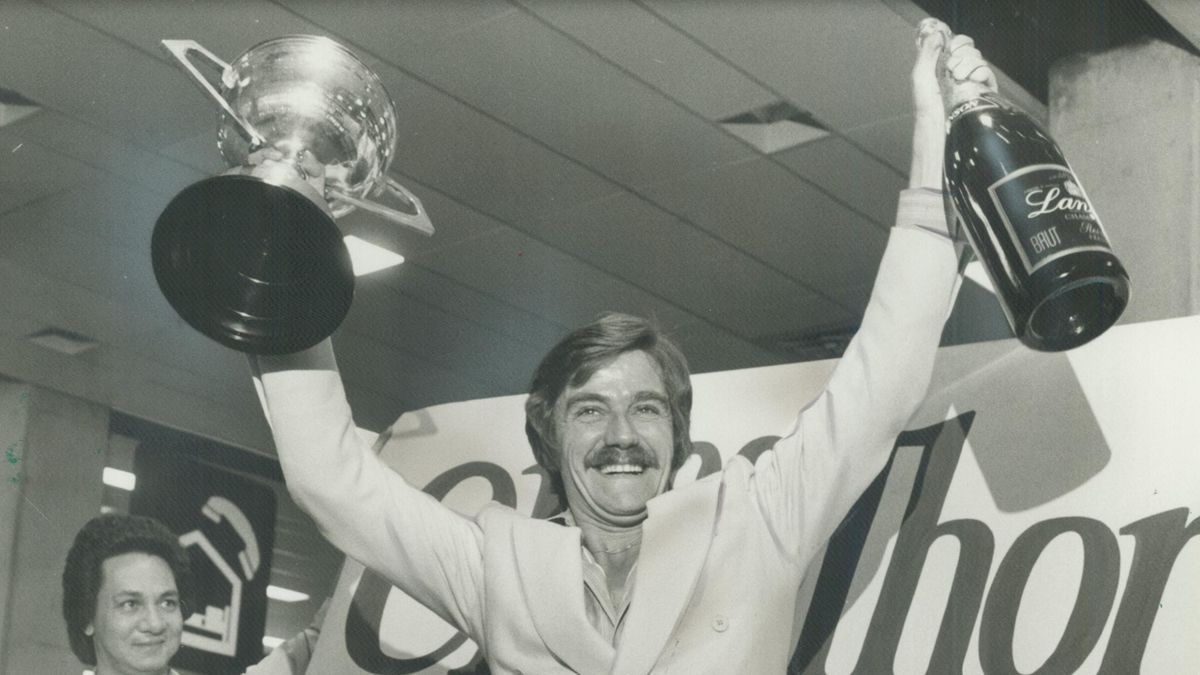
Cliff Thorburn is welcomed back to Toronto after claiming the 1980 world title.
Image credit: Eurosport
7. Ray Reardon (Wales) – world champion 1970, 1973, 1974, 1975, 1976 and 1978
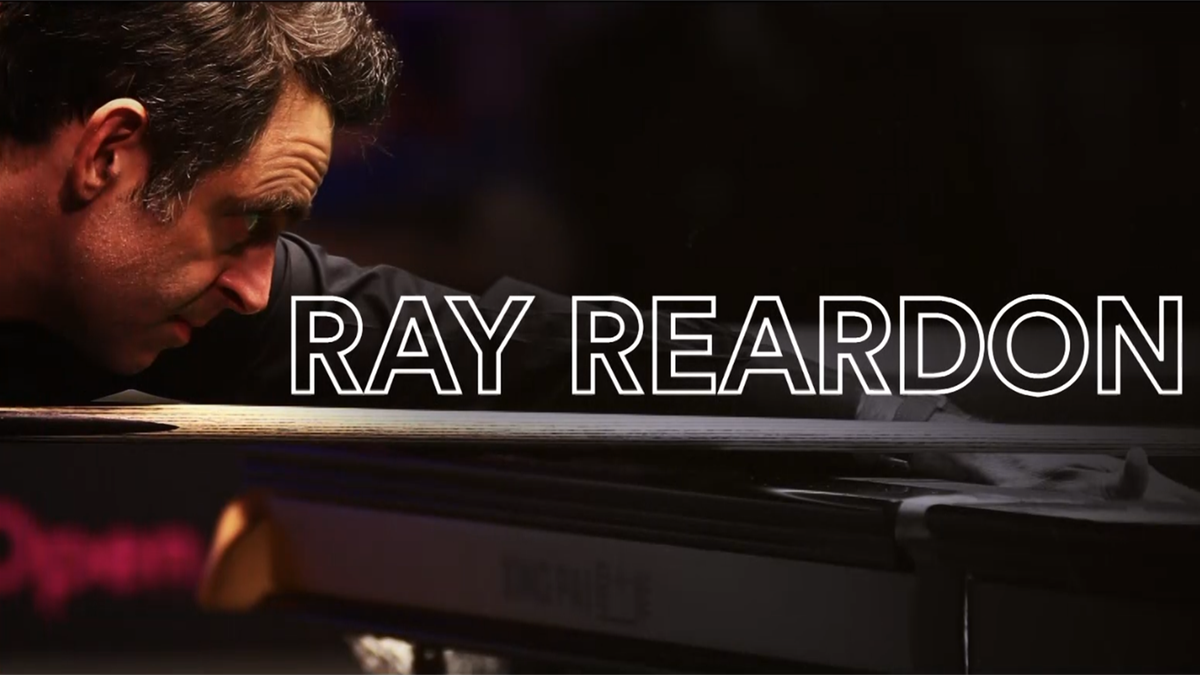
Ronnie O’Sullivan on ‘unbelievable relationship’ with Ray Reardon
Reardon lifted the world title six times in the 1970s with his solitary Crucible success coming in the 1978 final in Sheffield when he defeated Perrie Mans 25-18.
The Welshman also played a pivotal role in helping Ronnie O’Sullivan claim the second of his seven world titles in 2004 when ‘The Rocket’ sought advice on how he could bring consistency to the tactical side of the sport. Reardon’s influence on the importance of a telling safety shot should not be undervalued.
Nicknamed ‘Dracula’, the Tredegar-born character had a disarming smile, but knew when to put the bite on his opponent. O’Sullivan even sported some Dracula teeth after his 18-8 final win over Graeme Dott in tribute to the green baize giant.
Reardon was successful in 1970, 1973, 1974, 1975, 1976 and 1978 buoyed by a supreme strategic approach and a prodigious long game. As one of the game’s finest exponents of playing the correct shot, he provided the blueprint for Steve Davis to dominate the 1980s with a heavier-scoring version of the Reardon approach.
It says enough that world champions O’Sullivan and Shaun Murphy have thanked Reardon for helping them to enhance their tactical games with advice on how and when to advance their own interests in the spirit of their own respective games, armed with the ultimate aim of winning snooker.
Reardon was the oldest man to lift the World Championship at the Crucible Theatre aged 45 in 1978 until 46-year-old O’Sullivan defeated Judd Trump 18-13 in 2022.
“Reardon treated it like a job. His passion and his heart was in it,” said O’Sullivan. “Reardon was special.”
6. Ding Junhui (China) – world finalist 2016
China’s leading player Ding Junhui reached the World Championship final in 2016, losing 18-14 to Mark Selby, but his influence on the sport is evident with TV audiences of 45 million in his homeland watching the afternoon sessions of the final eight years ago.
The popularity and purpose of his play has witnessed an explosion of talent and tournaments becoming commonplace since the 18-year-old Ding completed a 10-6 win against Steve Davis in the 2005 UK Championship final, the first of three UK title victories.
China has 22 players on the professional circuit, second only to England with 57, and stages several huge tournaments as a direct result of Ding’s influence on the sport.
“The World Cup in football is in a different place every time, but of course there is a lot of history here so I understand it is quite hard. And also I know it is not my decision.
“But I wish China would get the chance to host it. I know the fans there would love to see the World Championship.
“It might be easier for me to win it then.”
He could yet become China’s first world champion, a holy grail that would be fitting reward for Ding’s commitment to the cause that has seen him contribute over 650 centuries, win 14 ranking titles and the Masters in London.
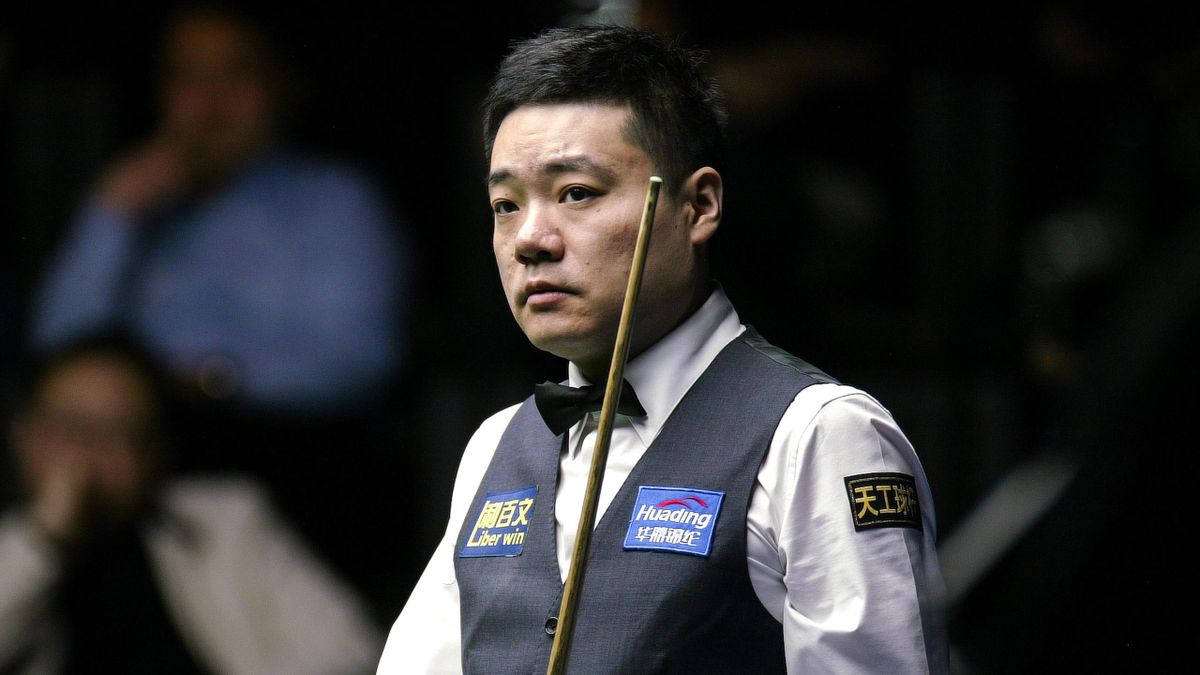
Ding punches table in celebration after win over Robertson in World Open semi-finals
5. Steve Davis (England) – world champion 1981, 1983, 1984, 1987, 1988 and 1989
He enjoyed a fierce rivalry with Alex Higgins with the contrast in styles adding to the widespread popularity of the game in the 1980s, but he would not have given Higgins a light during their intense bouts.
There was no doubt who was the more likely winner. Davis was the complete snooker player at the peak of his powers with a voracious appetite for prizes.
“It’s always a thrill to play at the Crucible,” he told me. “I don’t think you ever replicate the buzz of the early years, but the build-up and the excitement before the tournament starts give you the same feeling as a kid at Christmas almost.”
To put snooker’s popularity into some kind of perspective, when Davis won the last three of his six World Championships in 1987, 1988 and 1989, he snagged more money in those three years than golf’s Open champion – the £105,000 he enjoyed in 1989 dwarfed Mark Calcavecchia’s £80k for lifting the Claret Jug at Troon.
When Selby earned £350,000 for lifting a second world title in 2016, the year in which Davis ended his gilded 38-year career, Henrik Stenson collected £1.175m for conquering Troon. The sports have gone their separate ways financially.
Apart from missing the black against Taylor in the 1985 final, I asked Davis if he had any regrets looking back over his career.
He said: “I don’t regret missing the black, it was the green in the ninth frame…”
4. Stephen Hendry (Scotland) – world champion 1990, 1992, 1993, 1994, 1995, 1996 and 1999
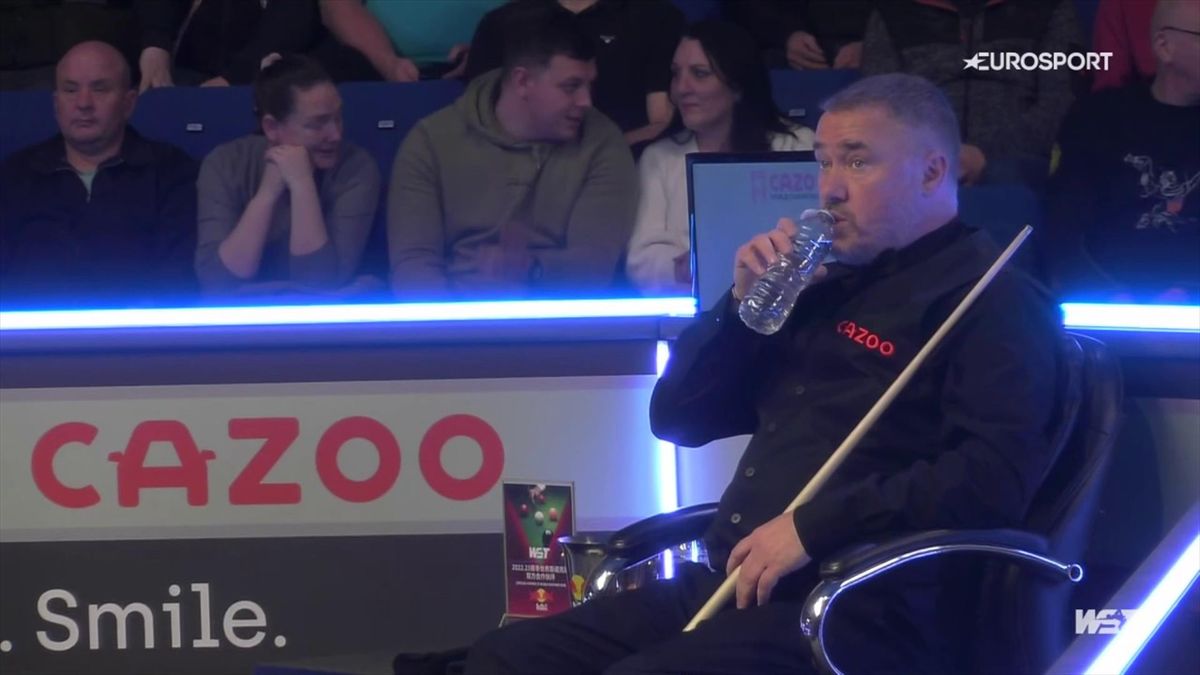
‘Return of the king!’ – Hendry opens up qualifying with fine century
The dawning of a new decade in the 1990s brought about a changing of the guard on the old green baize that scarcely seemed believable. Davis had dismantled John Parrott 18-3 to finalise a sixth Crucible victory in 1989, but never returned to the showpiece match as his glory days came to a shuddering halt.
The end of Davis’ dominance was hastened by the arrival of Stephen Hendry, whose fearsome long potting and break-building game saw him become the youngest Crucible winner of all time at the age of 21 with an 18-12 win over Jimmy White in the 1990 final.
Dubbed the ‘King of the Crucible’, Hendry would defeat White in three more finals with victories over Peter Ebdon and Mark Williams seeing him end the 1990s as the undisputed GOAT with seven world crowns.
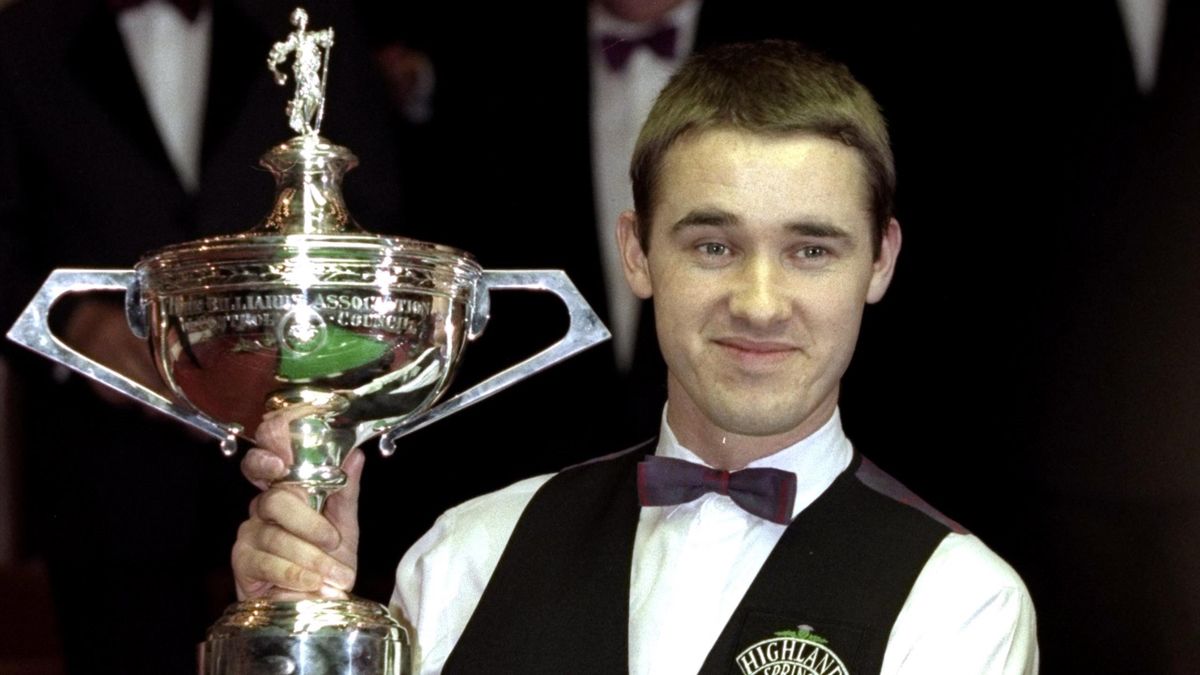
Stephen Hendry of Scotland celebrates victory with the trophy after winning the 1999 Embassy World Snooker Championships Final match against Mark Williams of Wales played at the Crucible Theatre in Sheffield, England, May 3, 1999
Image credit: Getty Images
Yet curiously, like Davis a decade earlier, his demise saw him denied the opportunity to become Hendry the eighth in the noughties.
It was Hendry who spawned the generation of the attacking players we witness today. His willingness to open the reds as early as possible was ground-breaking, but unlike Davis he did not take kindly to the nosedive that professional sport inevitably brings to its leading figures with advancing years.
He won 36 ranking titles, revelled in over £8 million in prize money and has amassed 777 century breaks since 1985.
He retired in 2012 after being forced to qualify for the World Championship, an event that he had made his own with a part-time return to the table in 2021 failing to ignite former glories.
3. Jimmy White (England) – world finalist 1984, 1990, 1991, 1992, 1993 and 1994
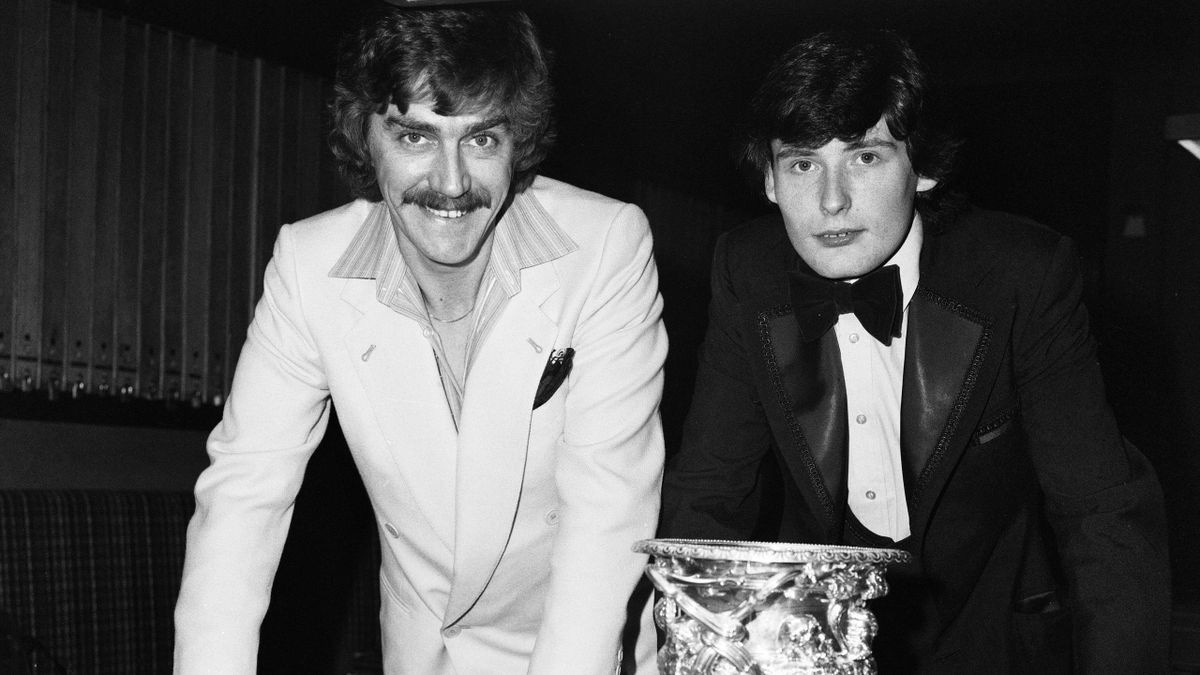
World champion Cliff Thorburn with Jimmy White in 1980.
Image credit: Eurosport
Snooker in itself was a soap opera with White cast as the young rebel with a cause. Millions of people up and down Blighty and beyond willed and wished the People’s Champion – a role he assumed from his close friend Alex Higgins – to become world champion for so, so long, but the Hollywood ending never came.
Certainly not at the Crucible, a dream-crushing cauldron for hundreds of hopeful cue artists, but arguably none more so than the free-wheeling, much-loved ‘Whirlwind’ of old London town, a figure who lost half a dozen world finals in all sorts of weird and wonderful ways between 1984 and 1994.
White succumbed in finals to Steve Davis in 1984, Parrott in 1991 and most memorably Hendry in 1990, 1992, 1993 and of course 1994, the most agonising of his six defeats when he was among the balls in the deciding frame only to “twitch” a black off its spot when finally poised for an 18-17 victory over the heavy-scoring Scotsman.
On the day he turned 32 – 30 years ago – White was rueful in defeat, telling a sarcastically well-wishing David ‘The Governor’ Vine in the post-match interview: “he’s beginning to annoy me”.
“He’s got solid technique and a sound temperament, but when he saw the land of milk and honey and Moses was leading you across the river bed in the greatest scene in the movie, he stayed a bit too long there and the water crashed down on you.”
White never returned to the sport’s blue-chip match, but his epic failure acted as a totem for others to avoid foundering on the rocks of their own great expectations.
“Admittedly, the Jimmy White curse was weighing on my mind,” said Ronnie O’Sullivan after lifting the first of six world titles with an 18-14 win against John Higgins in 2001.
“You think about what happened to him, and you wonder how he ever went back into that arena after losing the final six times.”
White arguably won more than he lost with his swashbuckling, crowd-pleasing style establishing him as one of the Crucible’s all-time most popular figures.
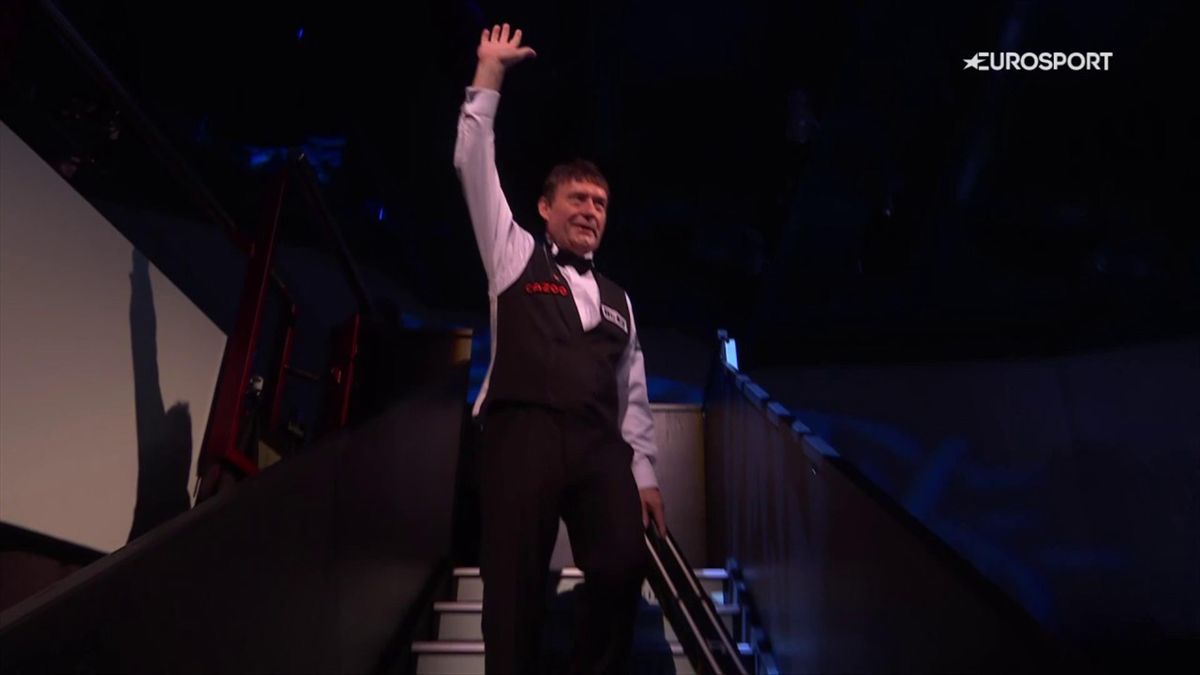
‘Come on Jimmy!’ – White given standing ovation on main draw return at UK Championship
2. Ronnie O’Sullivan (England) – world champion 2001, 2004, 2008, 2012, 2013, 2020 and 2022
For a career apparently prone to inconsistent moments as much as awe-inspiring magic, Ronnie O’Sullivan has been as committed to the Crucible as his pursuit of perfection for the past four decades.
Since losing 10-7 to Alan McManus in his Crucible debut in 1993, O’Sullivan has never missed his annual pilgrimage to Sheffield as he prepares for a record-extending 34th straight appearance this year.
While he may have a love-hate relationship with the venue, he also realises that this is the place where legacies are made in the sport.
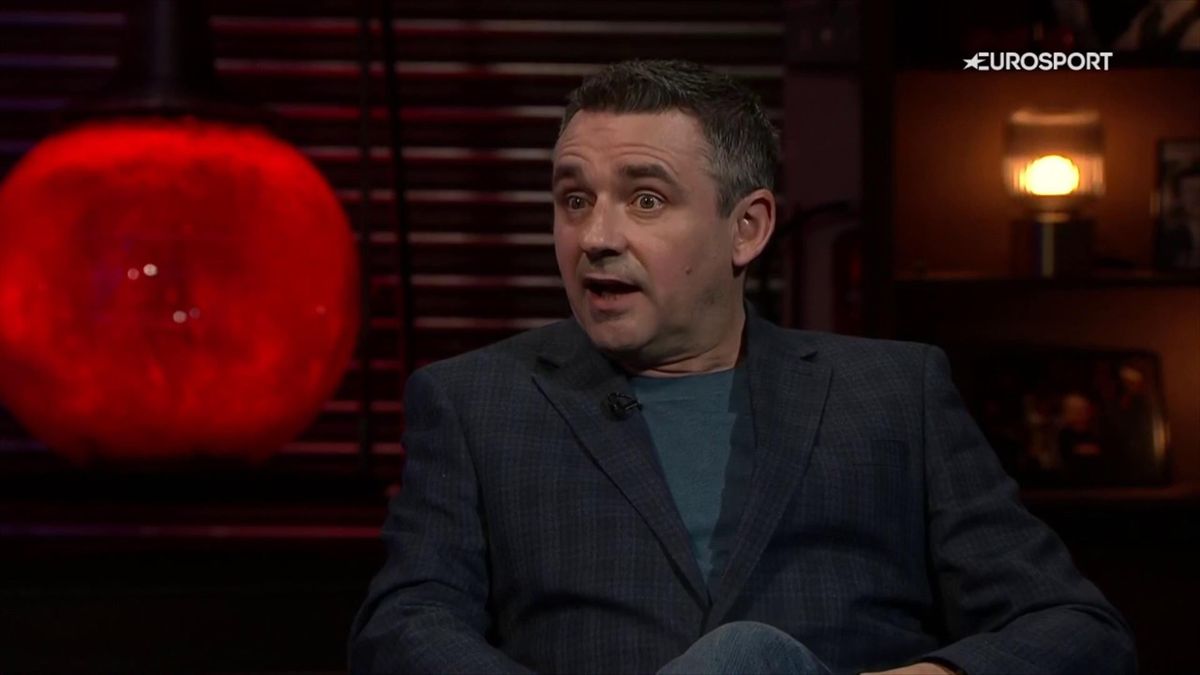
‘The best frame in Crucible history’ – White and McManus on O’Sullivan 147 in 1997
Watching the golden years of Davis in the 1980s and the outset of Hendry’s stranglehold in the 1990s helped developed O’Sullivan’s passion for potting balls to such an extent that he has gone beyond them both to become the greatest player of all time.
A figure who transcends snooker, O’Sullivan has captured the imagination of the public like Higgins and White due to his unpredictability on and off the table since turning professional in 1992, but it is his brilliance with a cue that continues to captivate millions of fans beyond the Crucible.
He stands alongside Higgins and White as genuine crowd-pleasers who have changed the face of snooker since Sheffield first housed the World Championship, bringing a greater popularity to the green baize.
O’Sullivan usurped Reardon to become the oldest world champion since the inception of the modern era.
O’Sullivan had 46 years and 148 days behind him when he held aloft the little silver lady on a priceless Bank Holiday Monday two years ago to equal Hendry’s haul of seven world titles. Naturally, the tears poured forth as he emotionally embraced his opponent Judd Trump.
It was the nearest any opponent got to him over 17 tortuous days.
O’Sullivan concedes reaching utopia suggests his roadshow at the elite level can run for several more years after reaching 1260 centuries and counting in his life and times.
“I just knew there were key shots I had to get to and I was confident I was able to do it.
“It is a good feeling winning frames from virtually impossible positions.”
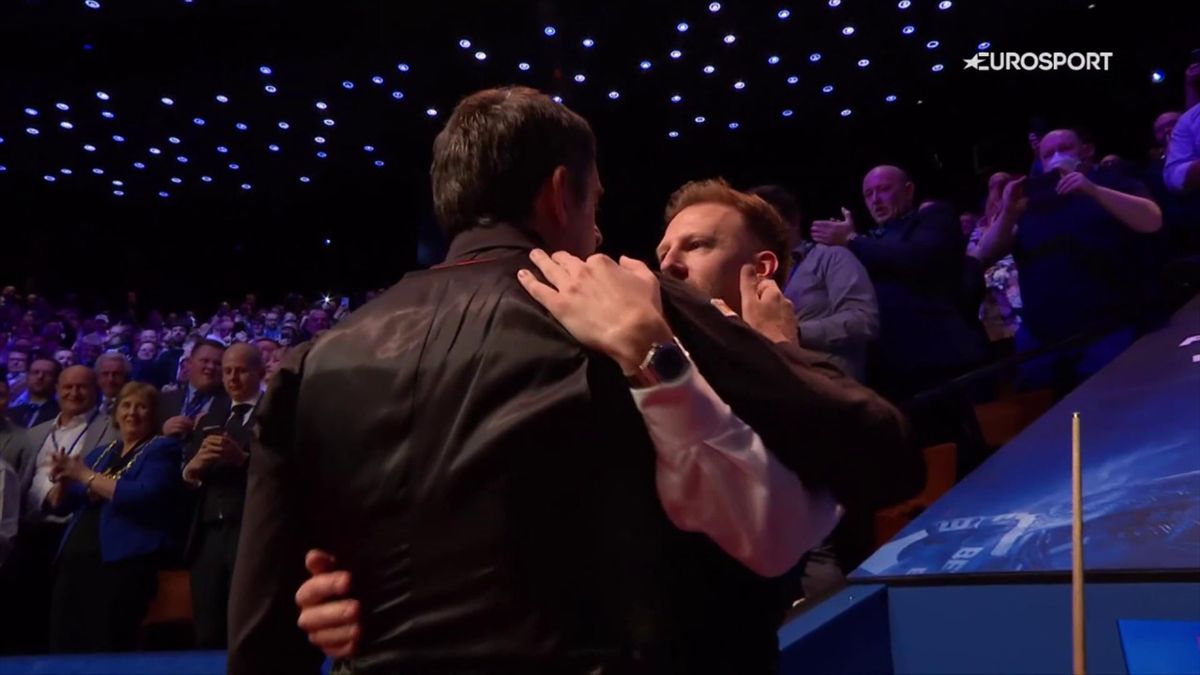
‘He can’t let him go!’ – O’Sullivan embraces Trump after winning seventh title
1. Alex Higgins (Northern Ireland) – world champion 1972 and 1982
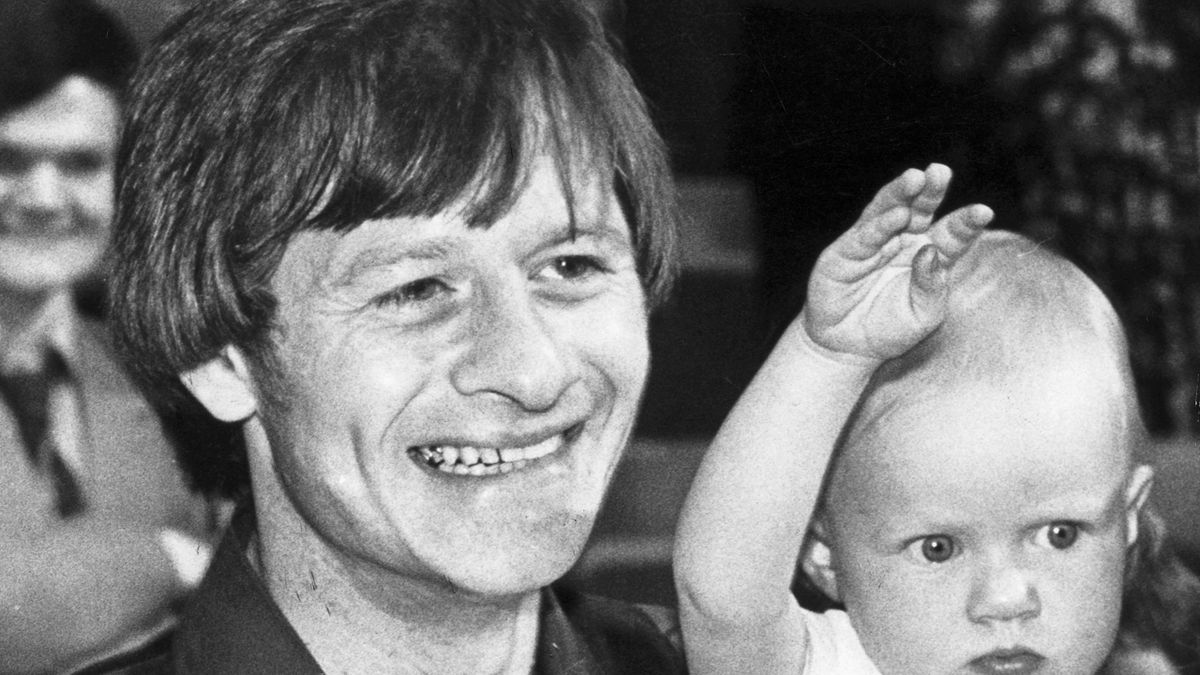
Alex Higgins with baby daughter Lauren after winning the World Championship in 1982.
Image credit: Eurosport
Alex ‘Hurricane’ Higgins won two world titles, against John Spencer (37-31) in 1972 and Reardon (18-15) in 1982, but the second was the solitary world trophy he carried off at the Crucible. In the semi-finals against White, he trailed 15-14 and 59-0 when he came to the table.
On the cusp of defeat, the Belfast icon produced a series of unbelievable pots despite appearing to have little control of the white ball.
The clearance of 69 on his way to a 16-15 win over White is widely regarded as one of the finest breaks in Crucible history before he usurped Reardon in the final with 11m viewers gripped by the action.
There is a pot on the blue to a baulk bag when he had made only 13 which is particularly fearsome.
In days of heavier balls and slower cloths, Higgins shaped the table against the odds with an air of unpredictability governing his next shot as his personal life was played out in the tabloids.
“Davis was a much heavier scorer and more of a power player,” said O’Sullivan. “Higgins had no right to beat Davis, but Higgins was a magician with a terrific knowledge of the table.
“He was a genius. In fact, I’d say he was the only genius to play snooker. You’ll never see another Alex Higgins again. It is like George Best.”
Higgins is fondly remembered for his natural flair and attacking instincts, but he was also a formidable safety player.
Part of the challenge of snooker is knowing when to play the right shot at the right time. Higgins was never afraid to fraternise with the tactical game when the mood took him.
His finest moment was arguably lifting the UK title in 1983 with a gripping 16-15 win over his bitter foe Davis. In the same year, he had been largely outclassed 16-5 by Davis in the semi-finals of the World Championship.
Yet Higgins somehow managed to rally from 7-0 behind, winning eight of the next nine frames to level at 8-8. He moved 14-12 clear, but trailed 15-14 before takiing the final two frames to the delight of his adoring public.
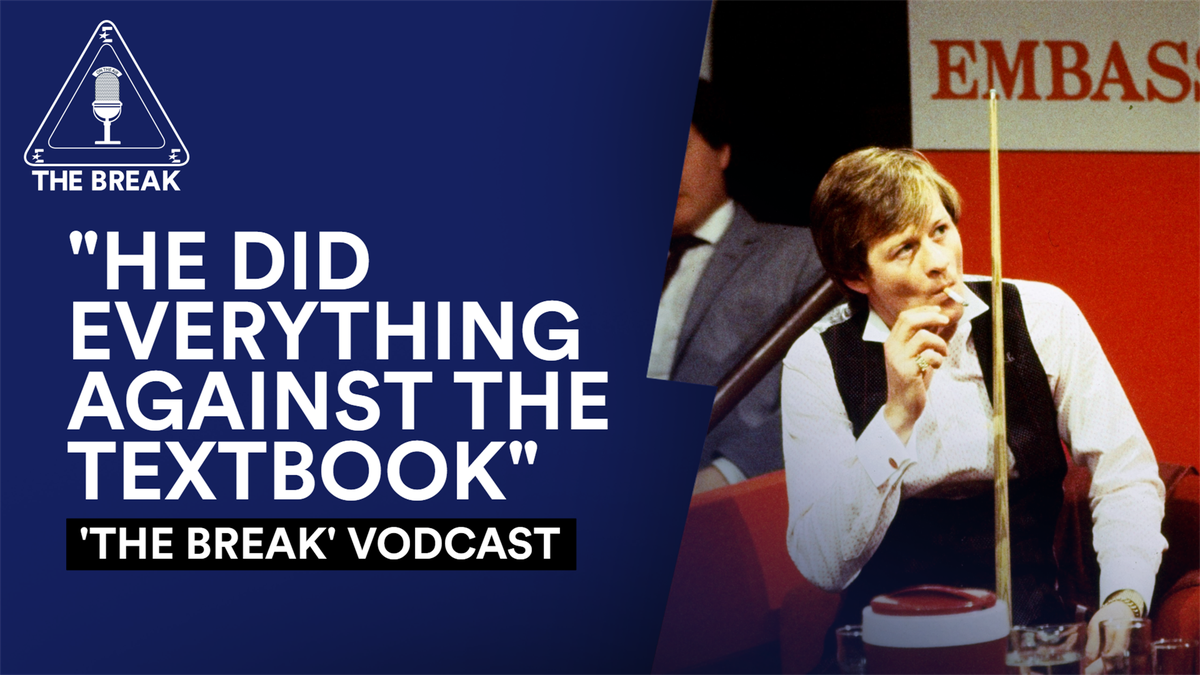
Jimmy White: Alex Higgins made snooker popular
Higgins’ tactical nous was part of his armoury, and his legion of fans appreciated Higgins in whatever mode he was in.
It is fair to say, without the popularity of Alex Higgins in the formative years of professionalism, .
A product of his time, he will be recalled as the Crucible’s all-time greatest showman.

